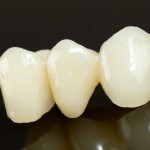
Resin-bonded fixed dental prostheses (RBFDPs) were introduced during the 1970s and have since become a well-accepted method of replacing missing anterior teeth. Survival rates for RBFDPs have been reported to range from 59-100%. A range of RBFDP frameworks involving one (cantilever), two (fixed–fixed), or multiple retainers have been employed and the impact of these designs on clinical performance and survival is debatable.
The aim of this review was to assess the failure rate and complications of different framework designs of RBFDPs in the anterior region.
Methods
Searches were conducted in the Medline/PubMed, EMBASE, Cochrane Library, Chinese Biomedical Literature Database (CBM) of the Chinese literature and WHO International Clinical Trials Registry databases. Randomised controlled trials (RCTs) prospective or retrospective cohort studies; clinical controlled trials (CCT) involving the replacement of anterior teeth missing with RBFDPs with a minimum of 2 years follow up were considered.
Two reviewers independently screened studies and abstracted data with bias and quality of the included studies being assessed using the Newcastle–Ottawa scale for cohort studies and the Cochrane risk of boas tool for RCTs. Data on reported failure rate/survival rate, debonding, and fractures were analysed using meta-analysis.
Results
- 5 studies were included, 1 RCTs, 2 prospective and 2 retrospective cohorts.
- All the included studies had a high risk of bias.
- Four of the 5 included studies demonstrated a lower failure rate for cantilever RBFDP with meta-analysis for failure rates of single-retainer cantilever RBFDPs being lower than two-retainer fixed-fixed RBFDPs, Odds ratio (OR) = 0.42 (95%CI; 0.19-0.94, P=0.04).
- Metal-ceramic RBFDPs showed no difference of failure rates between cantilever RBFDPs and two-retainer fixed-fixed RBFDPs, OR=0.93(95%CI; 0.33-2.63, P=0.89).
- Debonding was not significantly different between cantilever RBFDPs and two-retainer fixed-fixed RBFDPs, OR =0.61(95%CI; 0.23-1.60, P=0.32).
- Metal-ceramic RBFDPs showed no difference of debonding between cantilever RBFDPs and two-retainer fixed-fixed RBFDPs, OR=0.81 (95%CI; 0.28-2.34, P=0.70).
Conclusions
The authors concluded
Within the limitations of the present study, cantilever RBFDPs demonstrate lower clinical failure than two-retainer RBFDPs in the anterior region. The failure of metal-ceramic RBFDPs is independent of the framework design, while the failure of all-ceramic RBFDPs with different designs has not been clear yet.
Comments
Despite an extensive literature search only a few small studies and high risk of bias were identified. Because of this the results of this review should be interpreted with a good deal caution. While the use of RBFDPs in clinical practice has increased dramatically it would appear that there is little high quality research on the impact of framework design on the clinical performance of RBFDPs.
Links
Primary paper
Wei YR, Wang XD, Zhang Q, Li XX, Blatz MB, Jian YT, Zhao K. Clinical performance of anterior resin-bonded fixed dental prostheses with different framework designs: A systematic review and meta-analysis. J Dent. 2016 Apr;47:1-7. doi: 10.1016/j.jdent.2016.02.003. Epub 2016 Feb 11. Review. PubMed PMID: 26875611.
Other references

Lower failure rates with cantilever designs of resin-bonded fixed dental prostheses? https://t.co/W8nwMpiC77
Cantilever designs of resin-bonded fixed dental prostheses have lower failure rates suggests review https://t.co/W8nwMpiC77
@TheDentalElf Biting force w/Resin-bonded fixed dental prothesis’d be limited (suitable anterior teeth).Chamfer’s not invasive as veneer,so~
Review suggests lower failure rates with cantilever designs of resin-bonded fixed dental prostheses? https://t.co/W8nwMpiC77
Don’t miss-Resin-bonded fixed dental prostheses https://t.co/W8nwMpiC77
[…] Resin-bonded fixed dental prostheses […]